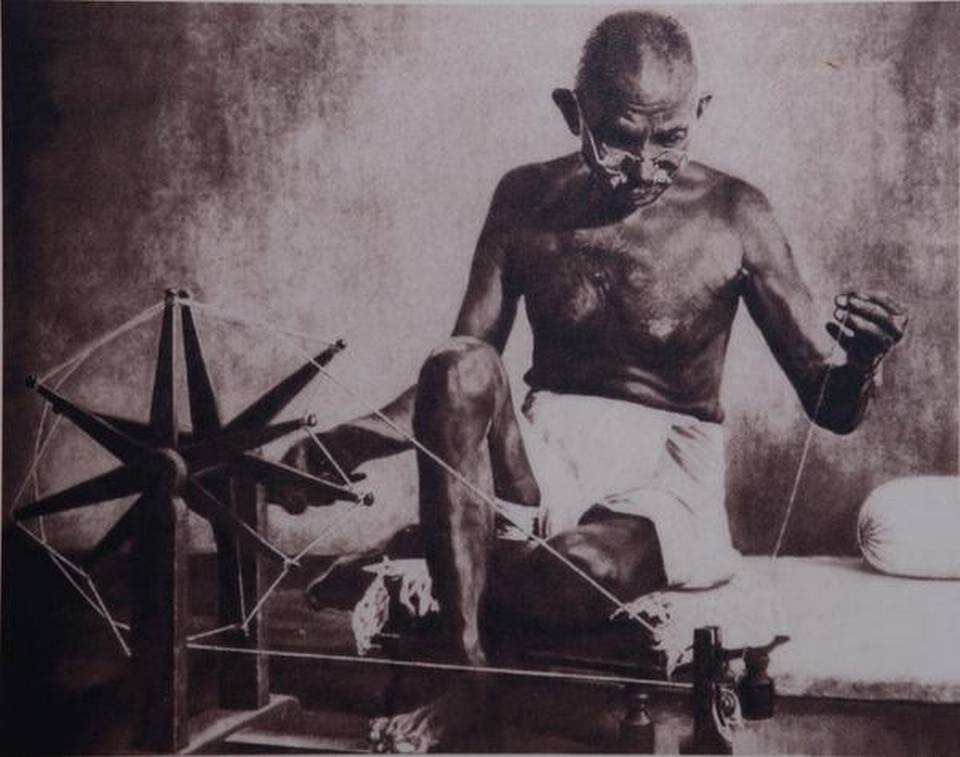An endless list of artistes — music, stage and cinema — adored him
It was January 31, 1948. “Mahatma Gandhi Amar Rahe” — the chorus of multitudes was heard all over India. Suddenly there was stillness in the air and pin drop silence. “Hari tum haro jan ki peer…” wafted in the melodious voice of M.S. Subbulakshmi. Millions heard the song with tears in their eyes. Gandhiji wanted this song to be sung by MS for his birthday in 1947 at his prayer meeting. MS was indisposed. Rajaji arranged for a recording and sent it to the Mahatma.
Mahatma Gandhi’s Tamil Nadu connection is well known. The young lady from South Africa, Valliammal, had joined his satyagraha movement and continued to follow him for decades. Gandhiji had leant Tamil and signed in Tamil. It was his visit to Madurai that led to a transformation of his dress code and it was Rajaji, who was the conscience-keeper of Mahatma Gandhi.
The freedom movement caught the attention of the Tamil theatre and music world. One of the early pioneers of the Tamil stage, Viswanatha Dass, had met Mahatma Gandhi in 1911 and got converted to Gandhian values, which he wove into his stage plays. The famous song, ‘Khadhar kodi kappal thondruthe…’ reverberated all over Tamil Nadu. He took to khadi and Lord Muruga was dressed in khadi on the stage. Police were ready to arrest him. He was arrested 29 times and bailed out by VOC and Muthuramalinga Thevar.
Gandhiji was in Coimbatore. The Madurai Devi Bala Vinoda Sangeetha Sabha of Nawab Rajamanickam was staging ‘Nandanar’. Gandhiji was invited for the show. He watched the entire show and complimented the Nawab for the bold social theme. He lauded the role of each member of the troupe. A charkha was presented to them. The Nawab considered it a blessing.
S.G. Kittappa and K.B. Sundarambal were big crowd pullers. S.Satyamurthy was instrumental in introducing the couple to the freedom movement. It was at Gandhiji’s persuasion that KBS chose to come back to the stage after the demise of Kittappa. She was always dressed in white khadi. She had recorded songs on Motilal Nehru, Kasturba, Bhagat Singh and Gandhi’s visit to the Round Table Conference. ‘Engal Gandhi London sendrar, aazhntha yochanaigal seithaar’ was a famous song.
When Gandhi was travelling from Karur to Erode, the car broke down at Kodumudi. Sathyamurthy took the Mahatma to Sundarambal’s house. Her joy knew no bounds. She arranged a feast and served the Mahatma on a golden plate. Gandhiji took the plate as a donation to the freedom movement and auctioned the same.
Semmangudi joined the freedom fighters in the salt march to Vedaranyam singing Bharati’s fiery poem, ‘Endru thaniyum intha sudhanthira dhaagam…’ Ariyakudi rendered ‘Raattiname Gandhi kai banam…’ embellishing each phrase with swara swirls in hurricane speed.
D.K.Pattammal was an ardent Gandhian. Her ‘Shanthi nilava vendum…’ carried the message of peace and brotherhood.
An Avatar
Gandhiji’s assassination shook the Tamil art and music world. Madurai Mani Iyer, the khadi-clad super star, took the help of Chitti Sundar Rajan to sing an elegy depicting Gandhiji as an avatar of Krishna, who had come down to destroy evil and resurrect dharma. The Pallavi with elaborate swara prasthara was set to Shanmukhapriya ragam and the various ideals were integrated in the charanam. M.K. Thyagaraja Bhagavathar sang ‘Gandhiyai pol oru santha swaroopanai kanbadhum elidhama…’ in his golden voice. MKT compared Gandhiji to the Buddha and Jesus.
The most soulful music of the era came from Kalki and M.S.Subbulakshmi. ‘Maanilathai vaazhavaikka vantha Mahatma’ was movingly rendered by M.S.
‘Manithar kulam uyindhidavae vantha Mahatma,
Deenargalin thanthaiyana Gandhi Mahatma,
Theeyavarkkum nanmai ennum deiva Mahatma…’
The song goes on to question whether the Devas and the Devis received the Mahatma with flowers as he ascended Heaven. Was he welcomed by Prahlada with tears shed on the Mahatma’s feet?
Did Gnanamuni Dadhichi bless the Mahatma? Was there a smile on the face of the Buddha as Gandhiji entered Heaven? Did Kasturba receive him with folded hands?
The next song of Kalki was even more poignant:
‘Ithanai naal aana pinnum ezhai nenjae yen thuyaram? Ethanai naal azhuthalum, Uthamar than varuvaaro?’ Will all your grieving bring back the Mahatma? You can find him in true love and grace, in the sorrows of the afflicted, in the innocent smiles of the children, in the chantings of the pious, in the bunch of flowers, in the hearts of those who give comfort to the down trodden and the slogging of the workers and peasants.
Kavimani Desika Vinayakam Pillai, Namakkal Kavignar and Suddhananda Bharathi added spark to the freedom movement with their electrifying poems — ‘Kathi indri, Ratham indri varugudhu por.’
The Tamil film world took to Gandhi with gay abandon. Nam Iruvar showed Kamala dancing to the tune
Mahaan… Gandhi Mahaan…
kai rattaiyae aayutham,
khadar adaiyae sobitham…
Gandhi Mangalam
Subramanya Bharati wrote that visionary stanza in 1920 — ‘Vazhga Nee Emman…’ — rendered with feeling by Madurai Mani Iyer. Ariyakudi Ramanuja Iyengar concluded his concerts with a Mangalam saluting the Father of the Nation:
‘Mohandasanukku Jaya Mangalam
Mahatma Gandhikku Subha Mangalam’
source: http://www.thehindu.com / The Hindu / Home> Society> History & Culture> Gandhi Jayanti / by T.C. A. Ramanujam / September 26th, 2019
